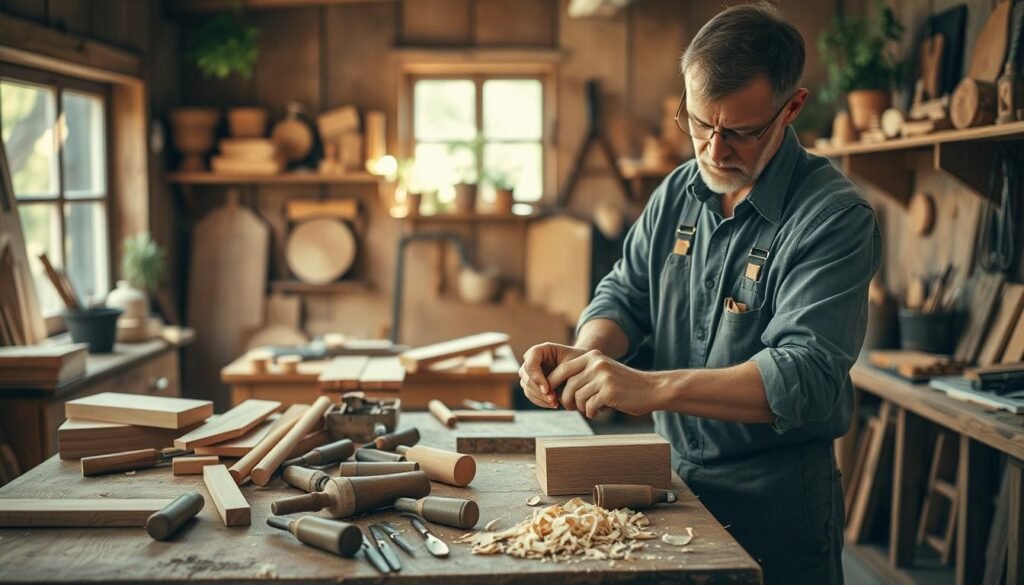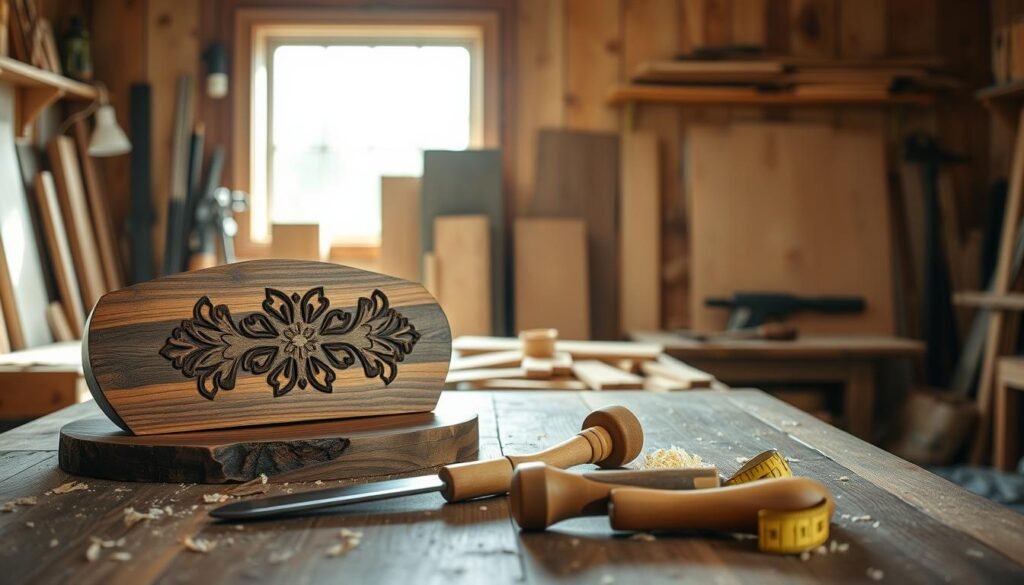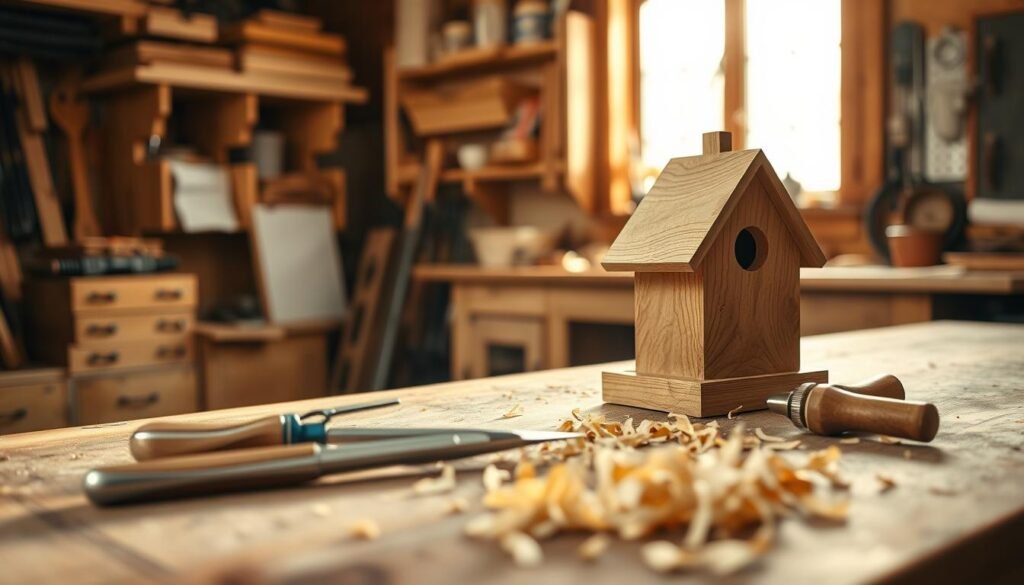Imagine holding a box that hides its secrets in layers of mystery. Himitsu-Bako, or Japanese puzzle boxes, have captivated collectors and wood lovers for centuries. They are known for their complex designs and tricky mechanisms.
These beautiful, handmade puzzles need a specific sequence to open. They are a fun challenge to figure out. Made with traditional woodwork, each box shows the craftsman’s skill and care.
The charm of these boxes is not just their secret compartments. It’s also their rich history and cultural importance. This makes them very popular among collectors and fans all over the world.
The Fascinating World of Himitsu-Bako
The world of Himitsu-Bako is a place where traditional Japanese woodwork and puzzle-making come together. It attracts collectors from all over. These secret boxes, known as Himitsu-Bako, are made of wood and need a special order to open. They show off the amazing skill of Japanese craftsmen.
These boxes are a sign of the skill of their makers and a deep cultural heritage. Each box has detailed designs and patterns. They are both beautiful and hard to solve.
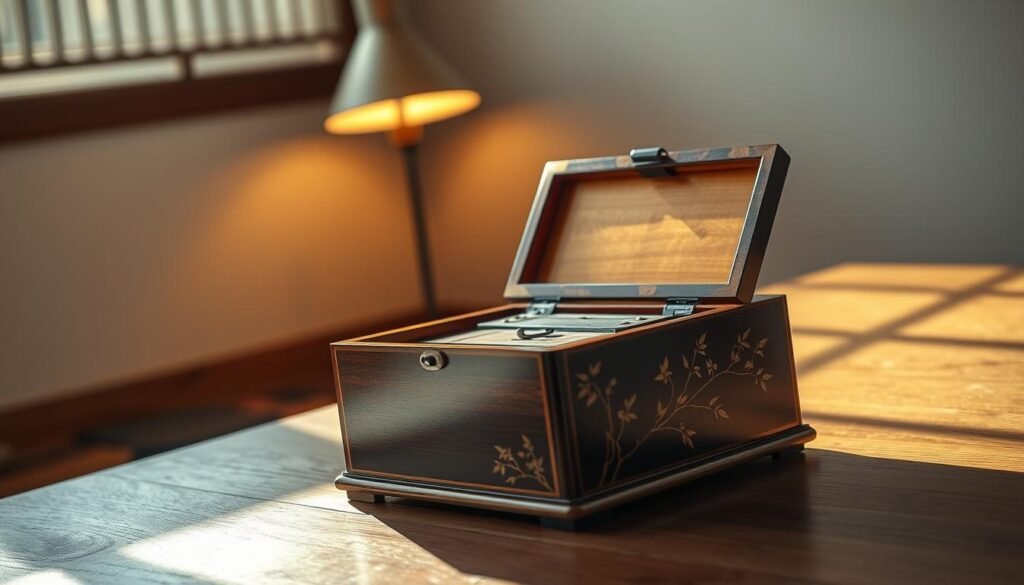
The art of making Himitsu-Bako has been kept alive for many years. Today’s craftsmen keep the tradition alive while adding new ideas. This makes Himitsu-Bako or Japanese secret boxes very popular among collectors and puzzle lovers. They offer a mix of traditional woodwork and a brain teaser.
Himitsu-Bako are loved for their beauty, complexity, and cultural importance. They are a key part of Japanese craftsmanship.
Japanese Puzzle Boxes: Unlocking the Secrets of Traditional Woodwork
Traditional Japanese woodworking is key to making complex Japanese puzzle boxes. These boxes are puzzles and fine art combined.
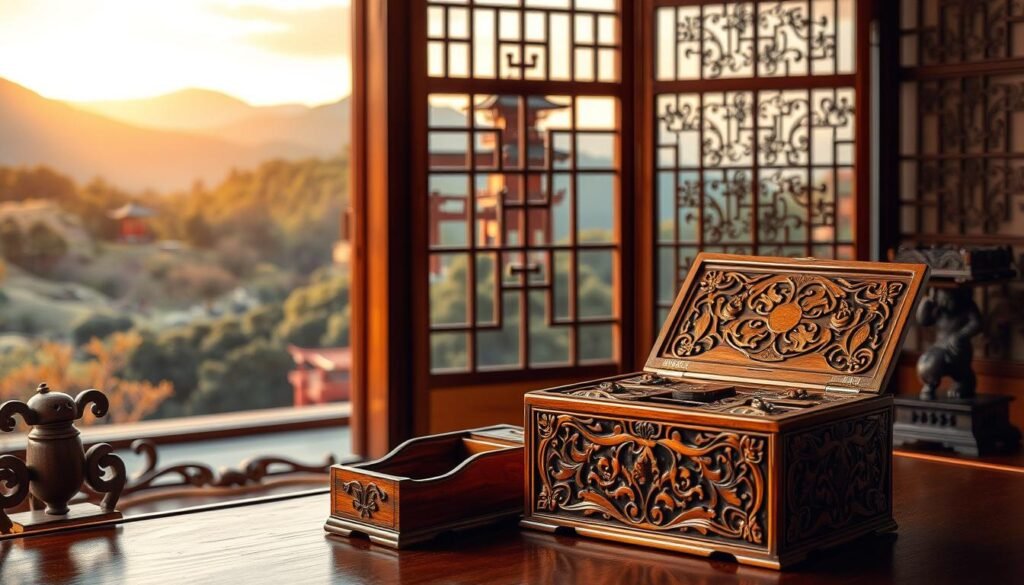
Making a handmade Japanese puzzle box needs careful detail and knowledge of old woodworking ways. Woodworkers pick special woods for their strength and beauty. They often choose paulownia or hinoki.
Techniques and Materials Used
They use methods like mortise and tenon joinery, hand-cut dovetail joints, and detailed carvings. The wood is chosen to be eco-friendly, showing Japan’s love for nature.
A Japanese puzzle box with secret spots needs skill and a grasp of the puzzle’s design. The work is a mix of art and science, making each box special.
The art of Japanese woodworking is highly valued, with techniques shared for ages. So, each handmade puzzle box is a puzzle and a piece of art. It shows Japan’s rich culture.
A Brief History of Japanese Puzzle Boxes
The history of Japanese puzzle boxes is rooted in traditional Japanese woodworking. These boxes, known as Himitsu-Bako, have amazed people for over a hundred years. They are known for their complex designs and puzzles.
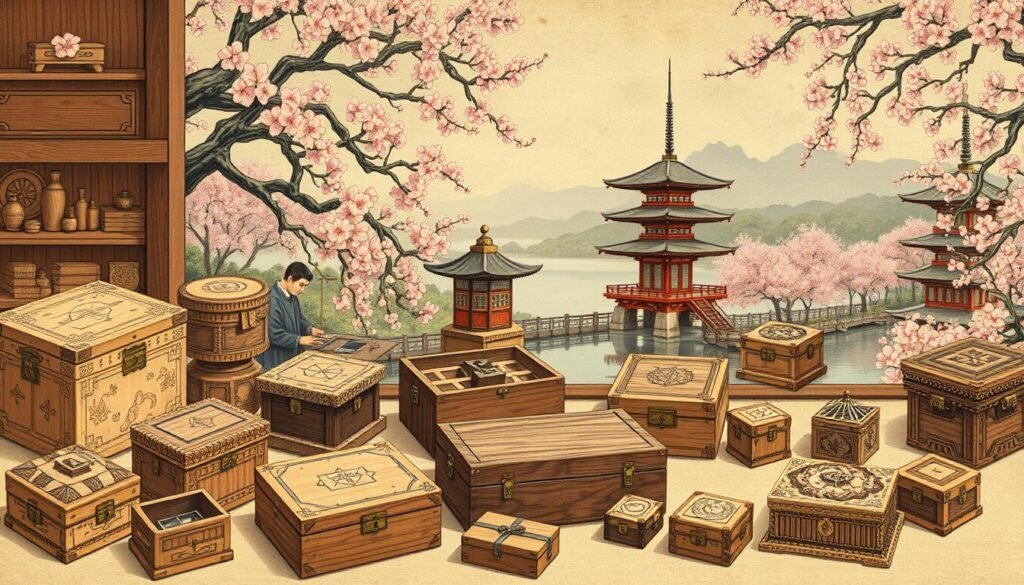
In the 19th century, Japan saw the start of Himitsu-Bako. They were used to keep valuable things like money or personal items safe. The skill needed to make these boxes shows a deep understanding of woodworking and puzzle-making.
As time went on, Japanese puzzle boxes got more complex. They now have different ways to open them, requiring a specific order of steps. This change came from master craftsmen who kept improving what was possible.
Now, the traditional Japanese himitsu-bako puzzle box is loved for its beauty and challenge. This has made Japanese puzzle boxes popular all over the world. They attract both puzzle lovers and collectors.
The Master Craftsmen Behind the Art
Every Japanese puzzle box is a result of a master craftsman’s skill and patience. These artisans spend years honing their craft. They master the art of making Japanese puzzle boxes.
Making handmade Japanese puzzle boxes is a cherished tradition. It requires great skill and attention to detail. Craftsmen use traditional methods and materials, like woodworking and precise joinery, to create these puzzles.
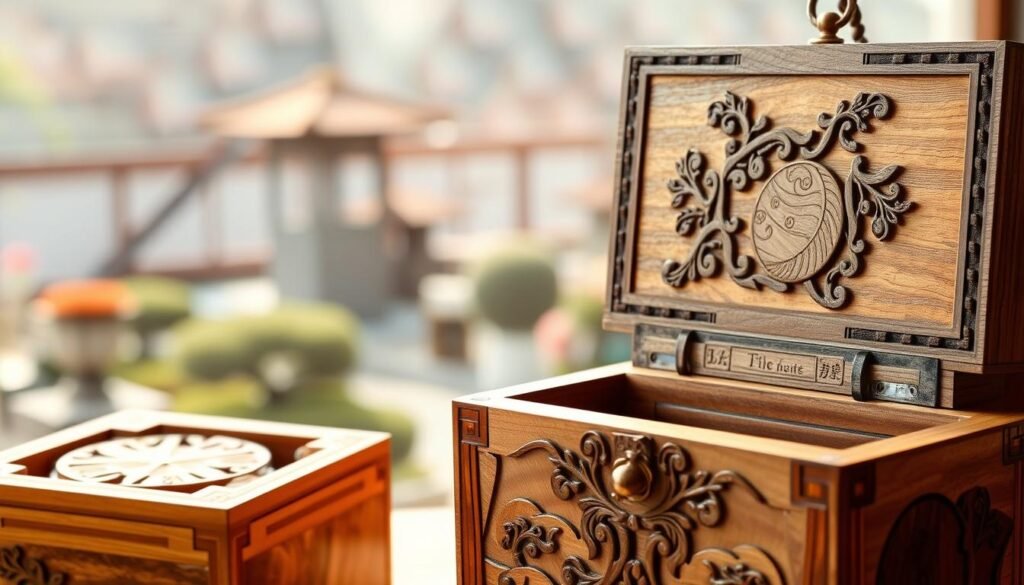
Preserving traditional Japanese craftsmanship is very important. Modern manufacturing is becoming more common. But, handmade Japanese puzzle boxes are a valuable cultural heritage that needs protection. By supporting these master craftsmen, we help keep this art form alive.
Japanese puzzle box crafts are more than puzzles. They are pieces of art that challenge and delight. The dedication and skill of these craftsmen show the lasting appeal of Japanese puzzle boxes.
Understanding Puzzle Box Complexity: From 2 to 72+ Steps
Japanese puzzle boxes are fascinating because of their different levels of complexity. They can be simple, needing just a few steps to open, or very complex, requiring 72 steps or more.
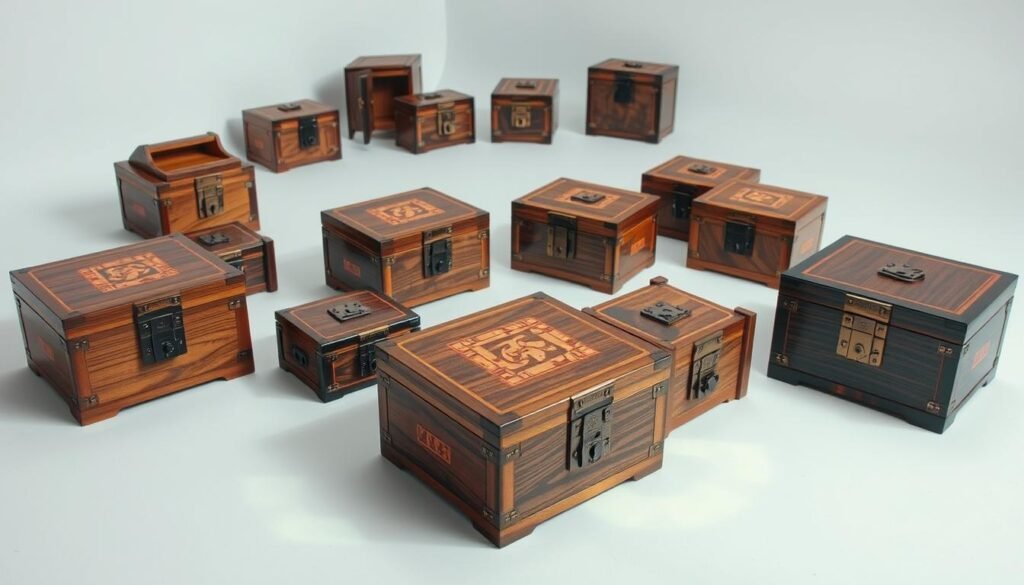
The appeal of these boxes lies in their complexity. Beginners start with simpler boxes, while experts look for the most challenging ones.
Simple to Complex Designs
These boxes have various mechanisms to make them more or less complex. Simple ones might have a sliding mechanism. But more complex ones have hidden compartments and cleverly hidden steps.
Creating these boxes is an art form. Each box is a puzzle and a piece of art. Whether you’re new or an expert, there’s a box for you.
The Intricate Designs and Patterns
Japanese puzzle boxes have designs that are both beautiful and complex. These designs are not just for show. They show the skill and hard work of the makers.
Artisans use special woodworking techniques to make these designs. They mix old woodworking ways with new puzzle ideas. This makes boxes that look great and are fun to solve.
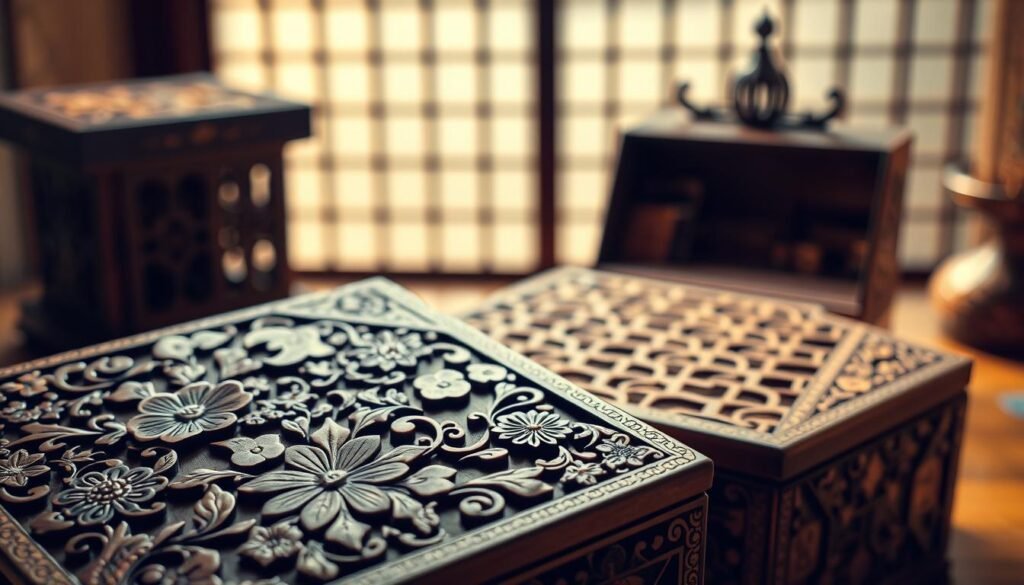
The designs on these boxes can be simple or very detailed. The material used also adds to the look. Different woods have their own patterns and textures.
What makes these boxes special is the artistry behind them. Each one is a unique piece of art. It shows the creativity and care of the person who made it.
In short, the designs and patterns on Japanese puzzle boxes are a big part of their charm. They show the mix of art, skill, and smart design that makes these items so unique.
How Japanese Puzzle Boxes Work
Japanese puzzle boxes have a secret mechanism that needs a specific order to open. These clever devices, known as “Himitsu-Bako,” have been made for centuries. They challenge and intrigue people everywhere with their complex designs.
The skill and craftsmanship in Japanese puzzle boxes are amazing. Each box has a unique sequence of moves. You must do these moves in the right order to open it. They are fascinating examples of Japanese secret boxes.
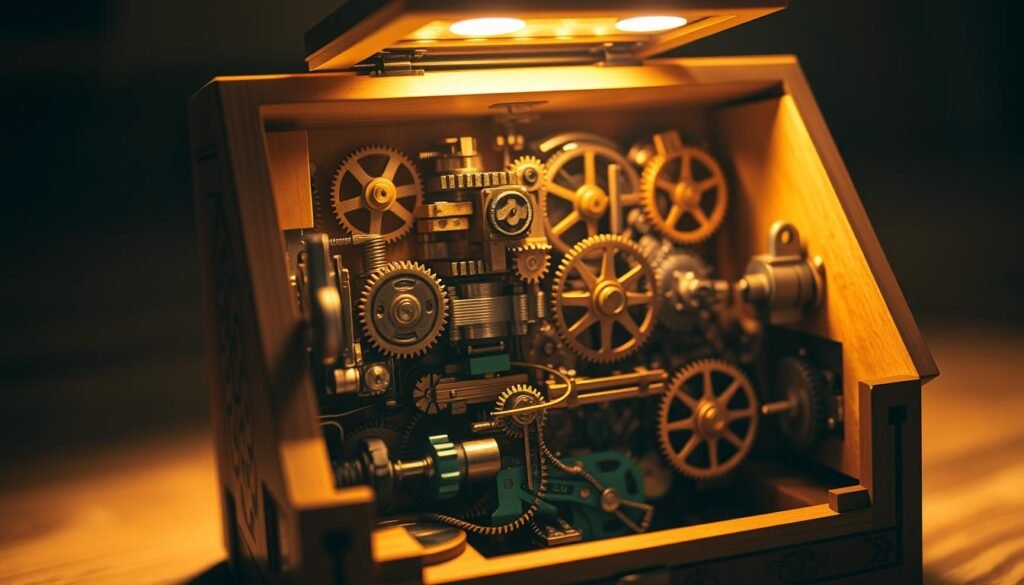
The mechanisms in these puzzle boxes range from simple to very complex. They require several steps to open. Learning how Japanese puzzle boxes work shows the skill and satisfaction of solving them.
Creating these boxes is a true art form. The goal is to make a sequence that is just right. It should be challenging but not too hard, giving the solver a sense of accomplishment.
The art of making Japanese puzzle boxes is loved by people all over the world. It combines puzzle-solving with cultural appreciation in a unique way.
Step-by-Step Guide: How to Open a Japanese Puzzle Box
Opening a Japanese puzzle box is an art that needs patience and a sharp eye. For beginners, it might seem hard. But, with a step-by-step guide, you can learn and master it.
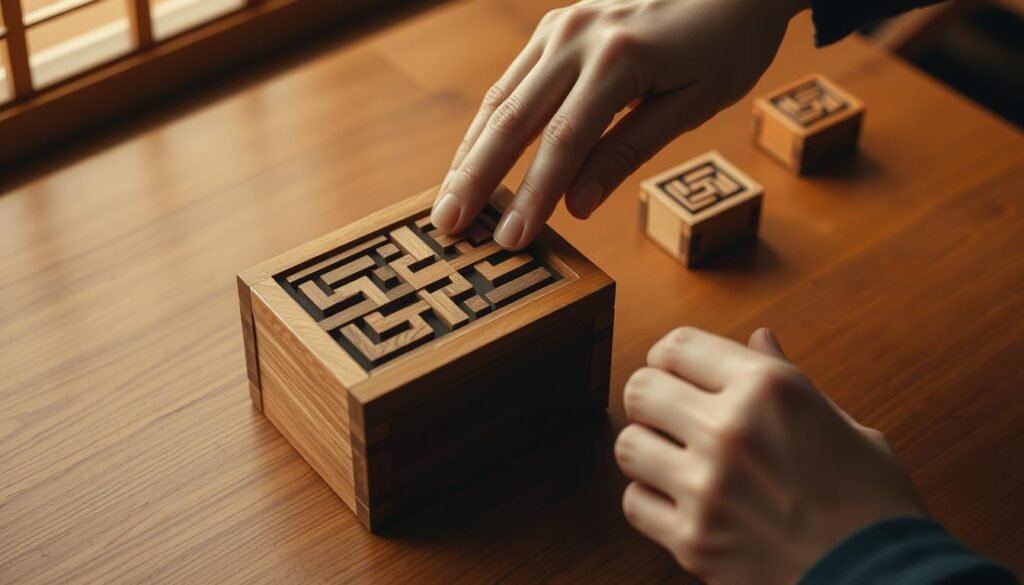
Start by looking at the box closely. Search for hidden signs, wood grain changes, or design clues. These can hint at how to open it. Japanese puzzle boxes, or Himitsu-Bako, have secret ways to open them.
Tips and Tricks for Solving
Beginners should start by gently sliding or moving parts of the box. It’s important to use soft pressure to avoid damage. Some boxes need you to pull, push, or slide parts in a certain order.
Listening to the box can also help. The sound it makes can guide you to the right moves. For harder boxes, knowing the mechanism is key. These might need you to do steps over and over or in a specific order.
Patience is essential, as solving some boxes can take a long time. One key tip is to appreciate the craftsmanship. The beauty of these boxes is in their design and clever mechanisms. By carefully examining and working through the steps, you can open even the toughest boxes.
The Joy of Solving: The Psychological Appeal
Japanese puzzle boxes are not just beautiful. They offer a deep joy in solving them. This joy comes from beating a tough puzzle, which makes us feel accomplished and happy.
Playing with these puzzle boxes boosts our brain power. It sharpens our problem-solving skills and makes us think more critically. Solving them requires patience, persistence, and focus, helping our minds grow and stay sharp.
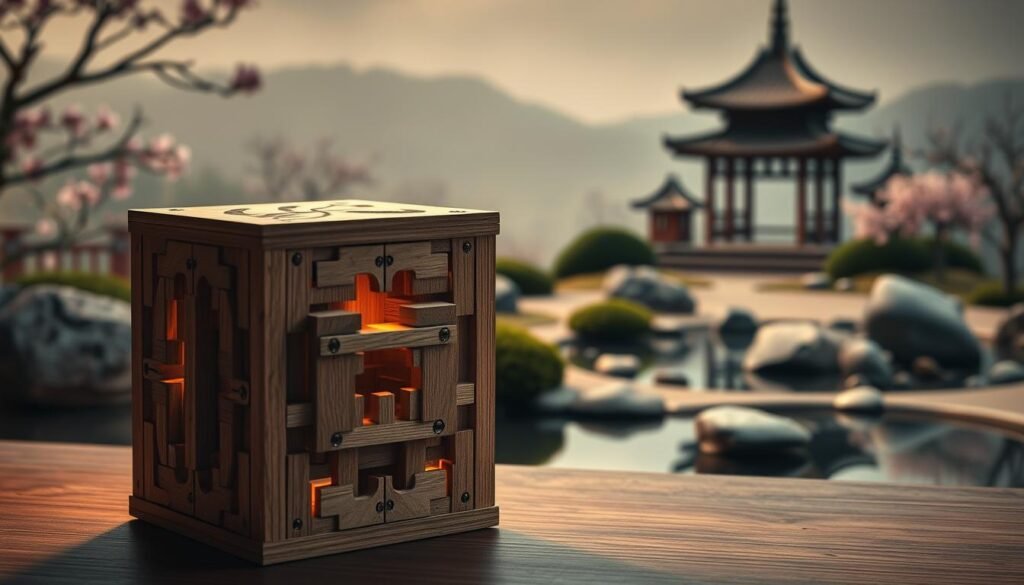
The thrill of opening a Japanese puzzle box is unmatched. The sense of victory is a strong motivator, pushing us to tackle more puzzles. This feeling is linked to dopamine, a chemical that brings us joy and satisfaction.
In short, Japanese puzzle boxes offer both mental and emotional benefits. They help us grow personally and appreciate the skill that goes into making them. Engaging with these puzzles is a rewarding experience.
Collecting Japanese Puzzle Boxes: A Beginner’s Guide
Collecting Japanese puzzle boxes is more than just gathering items. It’s about admiring the skill that goes into each piece. For those just starting, it might seem overwhelming. But with some advice, you can dive into this exciting hobby with ease.
Tips for New Collectors
When you begin, focus on the box’s complexity and the craftsmanship. Look for pieces made by famous craftsmen or those that show off traditional Japanese art. It’s also key to know how many steps it takes to open the box. This can really impact the box’s value and charm.
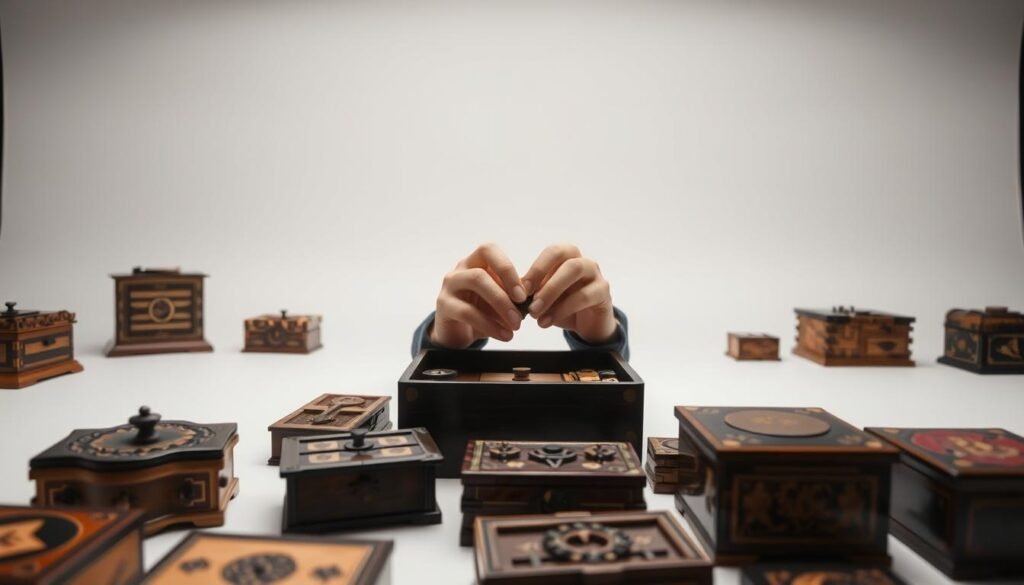
Another important thing is the box’s condition and material. Boxes that are in great shape, with detailed designs or made from top-notch wood, are highly prized. As a beginner, start with simpler boxes. Then, as you get better, you can move on to more challenging ones.
Lastly, don’t forget the community side of collecting. Joining forums or clubs for Japanese puzzle box collectors can offer great advice, tips, and chances to trade or buy new items for your collection.
Caring for Your Japanese Puzzle Boxes
It’s important to take care of your Japanese puzzle boxes. This keeps them looking good and working well. Proper care helps these beautiful pieces stay in top shape.
First, store your puzzle boxes in a cool, dry place. Keep them away from direct sunlight. Extreme temperatures or humidity can harm the wood. Always make sure your hands are clean and dry before touching them.
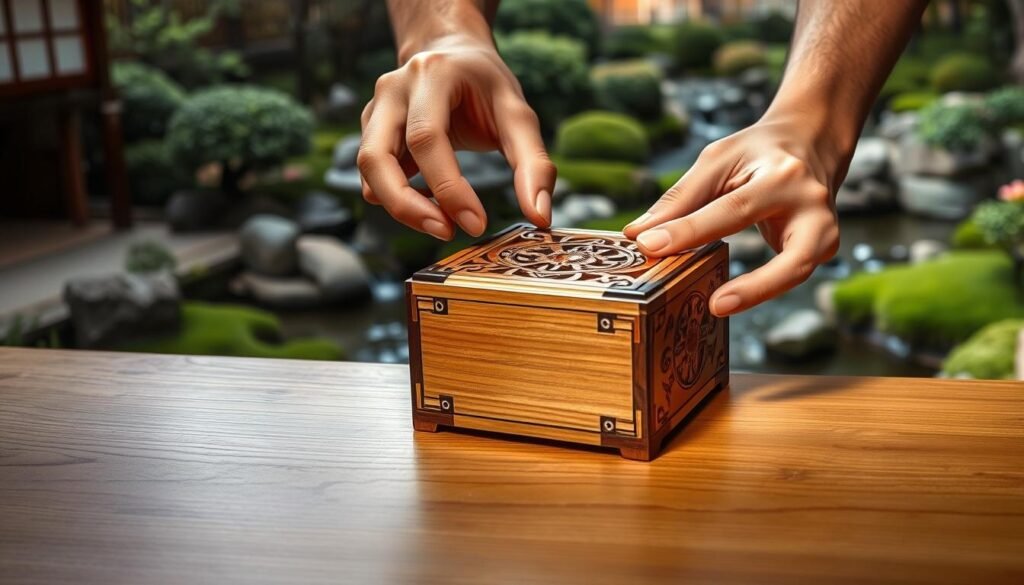
Dusting is key to keeping them clean. Use a soft, dry cloth to remove dust. Don’t use chemical cleaners or polishes, as they can damage the wood or the puzzle box’s mechanism. If you need to clean more thoroughly, use a slightly damp cloth. But, dry the box right away to avoid water damage.
By following these care tips, you’ll keep your Japanese puzzle boxes in great condition. They’ll continue to be a fun challenge for years.
Japanese Puzzle Boxes as Meaningful Gifts
Gift-giving is an art, and a handmade Japanese puzzle box is a masterpiece. It shows you care. Japanese puzzle boxes, or Himitsu-Bako, are puzzles and art combined. They can be kept for years.
A Japanese puzzle box is a unique gift for puzzle lovers and those who value traditional crafts. The designs and puzzle complexity show the giver’s thoughtfulness. It’s a sign of their attention to detail.
These boxes are perfect for birthdays, anniversaries, or holidays. They also make a special corporate gift. They symbolize the beauty and complexity of a well-made challenge.
When picking a Japanese puzzle box as a gift, think about the person’s skill and interests. There are puzzles for all levels, from easy to very hard. So, there’s something for everyone.
Displaying Your Collection
Displaying your Japanese puzzle box collection can make it even more special. Whether you’re a seasoned collector or just starting, it’s a great way to enjoy their beauty. You’ll appreciate their detailed designs and craftsmanship more.
Using a glass-front cabinet or shadow box is a smart choice. It keeps your puzzle boxes safe from dust and lets you see them from all sides. Arrange them by size, complexity, or theme for a stunning display.
You can also add your puzzle boxes to your home decor. Place a few on a decorative shelf or use them as a coffee table centerpiece. This way, you show off your collection and make your space more interesting.
Remember to handle your puzzle boxes carefully. Don’t touch the mechanisms or designs to avoid damage. By displaying them thoughtfully, you can enjoy your unique gifts for many years.
Where to Buy Authentic Japanese Puzzle Boxes
Many enthusiasts search for authentic Japanese puzzle boxes. Whether you’re a seasoned collector or new to these puzzle boxes, finding a reliable source is important.
When looking for authentic Japanese puzzle boxes, consider both online and offline options. Specialty stores and online marketplaces are top choices.
Online and Offline Options
Online marketplaces make buying authentic Japanese puzzle boxes easy from home. Websites focused on traditional Japanese crafts or puzzle toys often have genuine puzzle boxes. Always check reviews and product descriptions when shopping online.
For a hands-on experience, visit specialty stores or Japanese cultural centers. These places often host events where artisans show their work, including puzzle boxes.
When buying Japanese puzzle boxes, verify their authenticity. Look for details about the craftsman or the region. Authentic puzzle boxes are handcrafted, showing Japanese woodworking skill and tradition.
Buying from reputable sources ensures you get a genuine product. It also supports the artisans who create these unique pieces.
Conclusion: The Enduring Appeal of Japanese Puzzle Boxes
Japanese puzzle boxes have won hearts globally with their detailed designs and tricky locks. Their lasting charm comes from their deep history, top-notch craftsmanship, and the happiness they give to solvers.
The art of making Japanese puzzle boxes, called Himitsu-Bako, has grown over centuries. Skilled craftsmen keep improving their skills, keeping the tradition alive. These boxes are a mix of art and problem-solving, making them special.
Japanese puzzle boxes are loved for the challenge they offer. They are fun for both experienced collectors and new fans. These boxes mix brain work with beauty, making them a great find.
Looking ahead, Japanese puzzle boxes will keep exciting and inspiring people everywhere. They are more than just puzzles; they connect us to a rich culture and show the beauty of human creativity.

